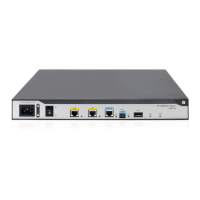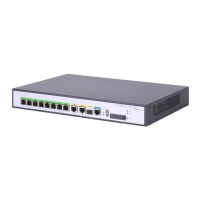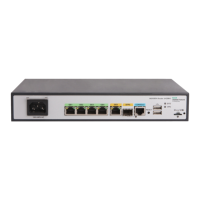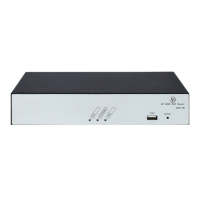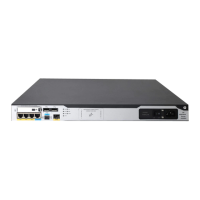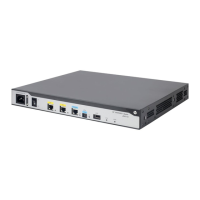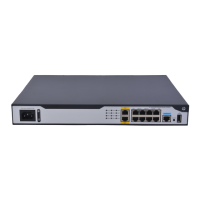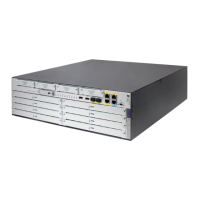169
[Router-Cellular2/4/0] quit
# Assign an IP address to interface Serial 2/4/0:0.
[Router] interface serial 2/4/0:0
[Router-Serial2/4/0:0] ip address 1.1.1.1 255.255.0.0
# Enable traditional DDR on interface Serial 2/4/0:0.
[Router-Serial2/4/0:0] dialer circular enable
# Associate interface Serial 2/4/0:0 with dialer group 1.
[Router-Serial2/4/0:0] dialer-group 1
# Set the interval for DDR to make the next call attempt to 5 seconds.
[Router-Serial2/4/0:0] dialer timer autodial 5
# Configure the dial string for placing calls as 666666.
[Router-Serial2/4/0:0] dialer number 666666
[Router-Serial2/4/0:0] quit
# Display user line information.
[Router] display user-interface
Idx Type Tx/Rx Modem Auth Int Location
0 TTY 1 9600 inout N Ser2/4/0:0 1/0
1 TTY 2 9600 - N Ser2/4/1:0 1/0
F 1408 AUX 0 9600 - N Aux1/0/0 1/0
F 1409 AUX 1 9600 - N Aux2/0/0 2/0
1410 VTY 0 - P - 1/0
1411 VTY 1 - P - 1/0
# Enable modem dial-in and dial-out on user line TTY 1.
[Router] line tty 1
[Router-line-tty1] modem enable both
4G modem management configuration example
Network requirements
As shown in Figure 53:
• The router provides a USB 4G or SIC-4G modem.
• The PC dials up to access an LTE network through Dial-on-Demand Routing (DDR).
For more information about DDR dialup, see "Configuring DDR."
Figure 53 Network diagram
Configuration procedure
# Configure dialer group 1 and configure DDR to place calls for IP packets.
<Router> system-view
[Router] dialer-group 1 rule ip permit
LTE network
Router
PC
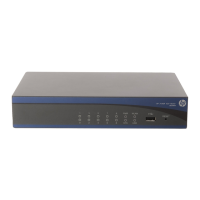
